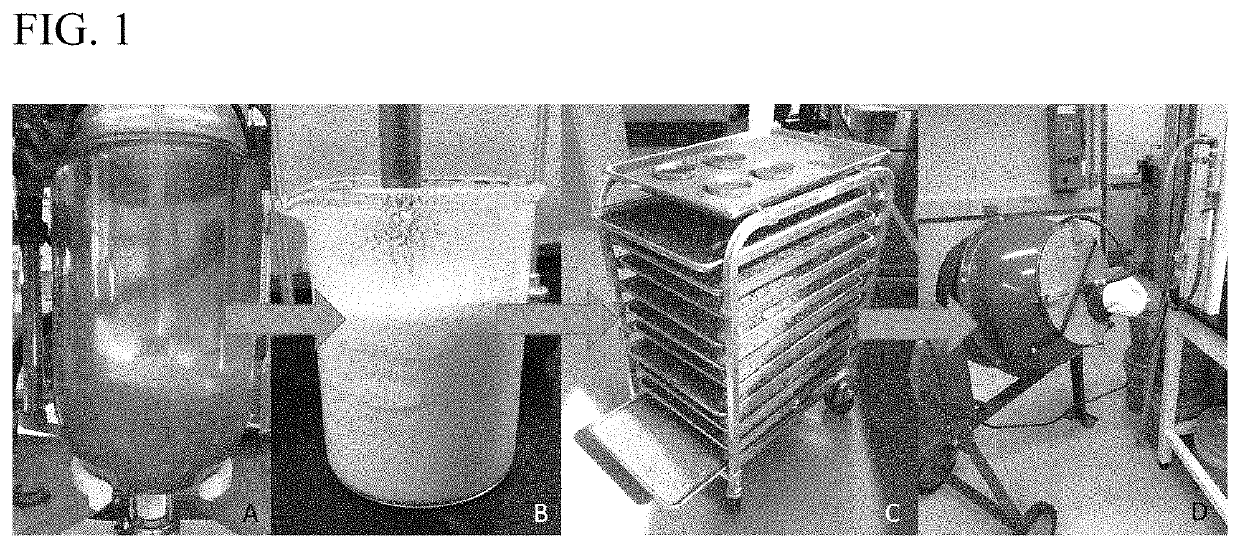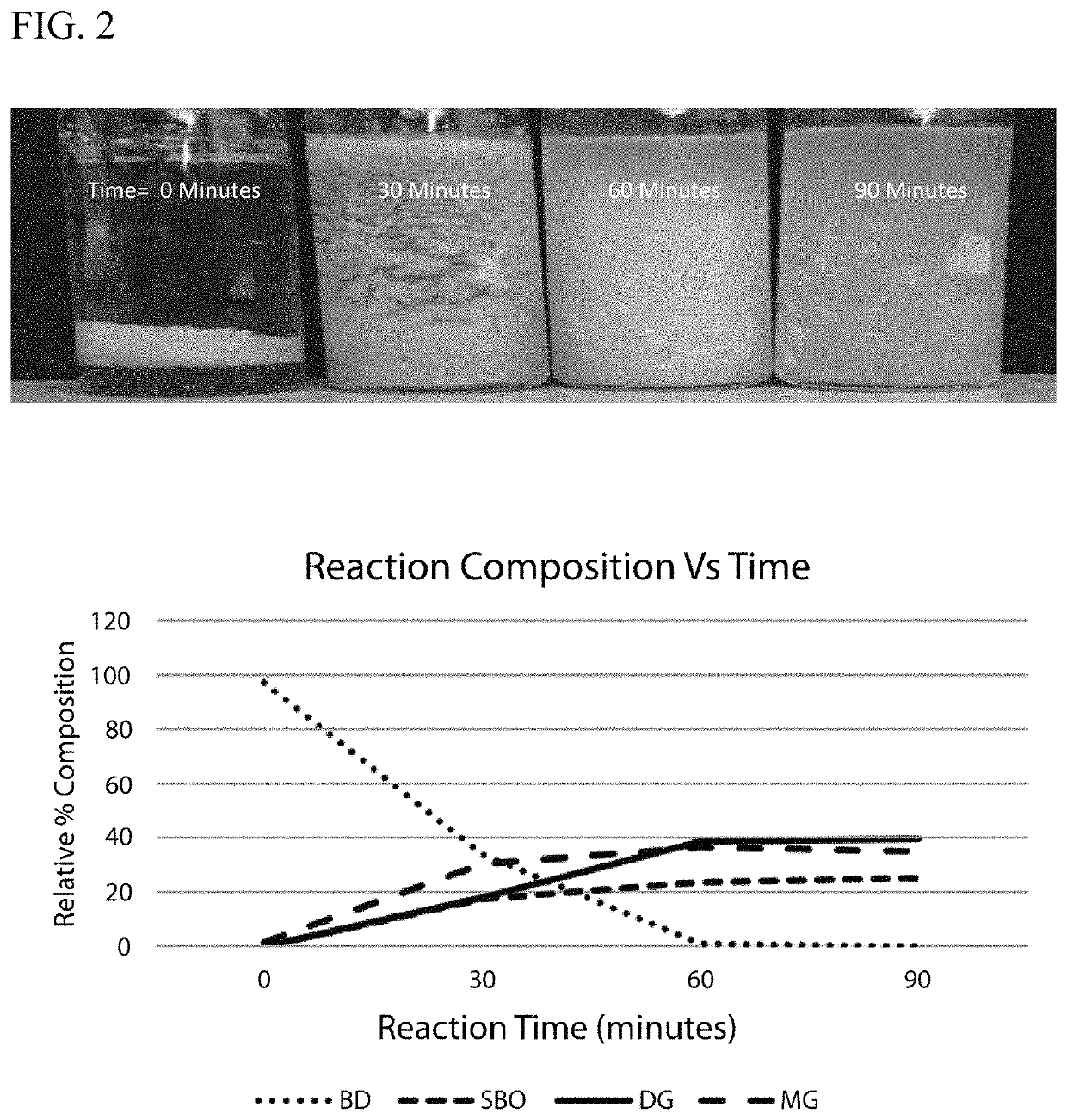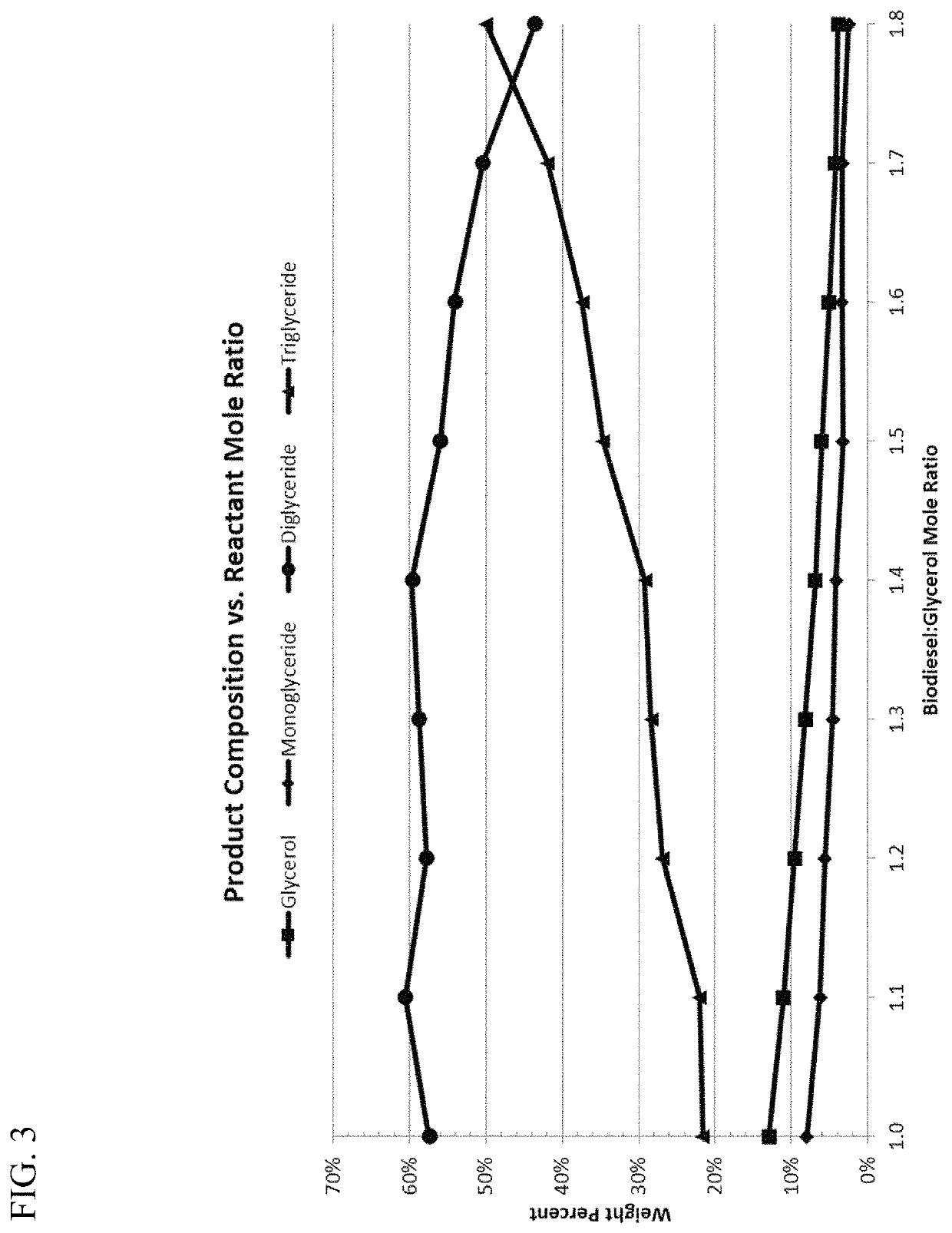Bio-derived composition for dust control
a technology of bio-derived compositions and dust control, which is applied in the direction of other chemical processes, roads, ways, etc., can solve the problems of high cost of purification and disposal of crude glycerol, and achieve the effect of high cost and high purification
- Summary
- Abstract
- Description
- Claims
- Application Information
AI Technical Summary
Benefits of technology
Problems solved by technology
Method used
Image
Examples
examples
[0066]The invention is illustrated by the following examples. It is to be understood that the particular examples, materials, amounts, and procedures are to be interpreted broadly in accordance with the scope and spirit of the invention as set forth herein.
example i
Biodiesel Waste for Production of Biomaterial for Road Dust Control
[0067]Biodiesel is a form of diesel fuel manufactured from vegetable oils, animal fats, or recycled restaurant greases. Currently, the major feedstock for biodiesel production in the United States is soybean oil. The conventional production of biodiesel involves a chemical reaction called transesterification where soybean oil triacylglycerides are reacted with methanol catalyzed by either a strong acid or base catalyst. Most biodiesel production today uses a base catalyst because of its high conversion rate, low cost and minimal side reactions. The transesterification reaction produces a significant waste stream of crude glycerol that can be as much as 10% by weight of the biodiesel produced. For example, in 2013 over 180 million gallons of crude glycerol were generated as a waste stream from biodiesel production. The crude glycerol generated from soybean oil feedstock contains 67.8% pure glycerol along with methanol...
example ii
Preparation of Biomaterial Derived from Biodiesel Waste and Evaluation of Dust Control Properties
Overview
[0104]Waste glycerol can be combined with soybean oil or soy biodiesel in a chemical process to generate high concentrations of mono- and diglycerides. The resulting bio-derived material is well-suited to application to gravel roads as a dust mitigation agent. The benefit of the mono- and diglycerides are threefold. First the presence of hydroxyl groups on the glycerol end of the glyceride allows it to be dispersed in water while the long chain fatty component compatiblizes any triglycerides present in the mixture, allowing them to be emulsified in water without the need for additional surfactants. Second, the unsaturated fatty chain(s) (from the soybean oil or the soy-based biodiesel) allow the molecules to cross-link with each other and cure into a sticky semi-solid material producing a web-like polymeric structure that binds the dust suppressant agent to the fine particles wit...
PUM
| Property | Measurement | Unit |
|---|---|---|
| temperatures | aaaaa | aaaaa |
| size | aaaaa | aaaaa |
| temperatures | aaaaa | aaaaa |
Abstract
Description
Claims
Application Information
 Login to View More
Login to View More - R&D
- Intellectual Property
- Life Sciences
- Materials
- Tech Scout
- Unparalleled Data Quality
- Higher Quality Content
- 60% Fewer Hallucinations
Browse by: Latest US Patents, China's latest patents, Technical Efficacy Thesaurus, Application Domain, Technology Topic, Popular Technical Reports.
© 2025 PatSnap. All rights reserved.Legal|Privacy policy|Modern Slavery Act Transparency Statement|Sitemap|About US| Contact US: help@patsnap.com



